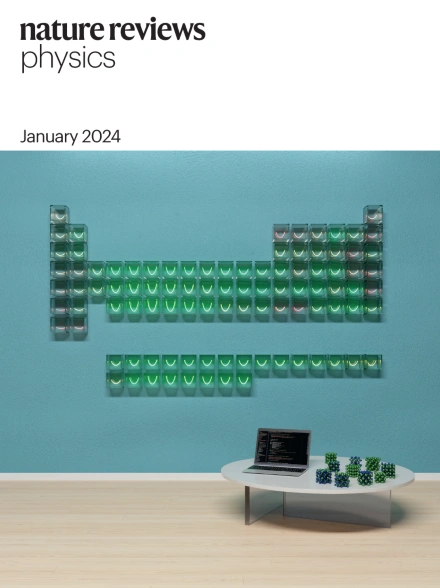The potential of multidimensional photonic computing
IF 39.5
1区 物理与天体物理
Q1 PHYSICS, APPLIED
引用次数: 0
Abstract
The rapidly increasing demands on computational throughput, bandwidth and memory capacity fuelled by breakthroughs in machine learning pose substantial challenges for conventional electronic computing platforms. Historically, advancing compute performance relied on miniaturization to increase the transistor count on a given chip area and, more recently, on the development of parallel and multicore architectures. Computing platforms that process data using multiple, orthogonal dimensions can achieve exponential scaling on trajectories much steeper than what is possible with conventional strategies. One promising analog platform is photonics, which makes use of the physics of light, such as sensitivity to material properties and ability to encode information across multiple degrees of freedom. With recent breakthroughs in integrated photonic hardware and control, large-scale photonic systems have become a practical and timely solution for data-intensive, real-time computational tasks. Here, we explain developments in the realization of multidimensional computing platforms based on photonic systems. Moving to such architectures holds promise for low-latency, high-bandwidth information processing at reduced energy consumption. Multidimensional photonic computing is a framework that combines classical and quantum approaches, leveraging the properties of light. This Perspective explores its potential to enable scalable, neuromorphic photonic quantum systems suited to data-intensive and complex computational tasks.

多维光子计算的潜力
机器学习的突破推动了对计算吞吐量、带宽和内存容量的快速增长的需求,对传统的电子计算平台构成了重大挑战。从历史上看,提高计算性能依赖于小型化来增加给定芯片面积上的晶体管数量,最近则依赖于并行和多核架构的发展。使用多个正交维度处理数据的计算平台可以在比传统策略更陡峭的轨迹上实现指数缩放。光子学是一个很有前途的模拟平台,它利用光的物理特性,如对材料特性的敏感性和跨多个自由度对信息进行编码的能力。随着近年来集成光子硬件和控制的突破,大规模光子系统已经成为数据密集型实时计算任务的实用和及时的解决方案。在这里,我们解释了基于光子系统的多维计算平台实现的发展。迁移到这样的体系结构有望在降低能耗的情况下实现低延迟、高带宽的信息处理。多维光子计算是一个结合经典和量子方法的框架,利用光的特性。本展望探讨了它的潜力,使可扩展的,神经形态光子量子系统适合于数据密集型和复杂的计算任务。
本文章由计算机程序翻译,如有差异,请以英文原文为准。
求助全文
约1分钟内获得全文
求助全文
来源期刊

Nature Reviews Physics
Multiple-
CiteScore
47.80
自引率
0.50%
发文量
122
期刊介绍:
Nature Reviews Physics is an online-only reviews journal, part of the Nature Reviews portfolio of journals. It publishes high-quality technical reference, review, and commentary articles in all areas of fundamental and applied physics. The journal offers a range of content types, including Reviews, Perspectives, Roadmaps, Technical Reviews, Expert Recommendations, Comments, Editorials, Research Highlights, Features, and News & Views, which cover significant advances in the field and topical issues. Nature Reviews Physics is published monthly from January 2019 and does not have external, academic editors. Instead, all editorial decisions are made by a dedicated team of full-time professional editors.
 求助内容:
求助内容: 应助结果提醒方式:
应助结果提醒方式:


